- Home
- Louis L'Amour
Sacketts 00 - The Sackett Companion (v5.0) Page 3
Sacketts 00 - The Sackett Companion (v5.0) Read online
Page 3
Do not expect every generation’s story to be filled with adventure. Some of the Sacketts, as with all families, lived quiet lives and died quietly. When a man has four sons, only one may survive to become a man. Childbirth was never easy on the frontier, nor was medical attention often available. If someone became ill, he or she was treated with what simple remedies were known. The way west was marked with the graves of those who died en route, for that way was never easy.
My stories may seem to be the stories of men, but a check of my books will show that I have probably written the stories of more strong women than any other writer. I will not list them all here, but Miss Nesselrode of THE LONESOME GODS, Ruth Macken of BENDIGO SHAFTER, Echo Sackett of RIDE THE RIVER, Em Talon of RIDE THE DARK TRAIL are some, and there are so many others. I believe there are at least fifty such in my books—some major characters, others who had minor roles. I must admit that one of my favorites is Miss Jessica Trescott, of MATAGORDA. She was a lady of style, in everything she did.
Those who have read the books know something of them; only here and there I have added bits of extra information. If this COMPANION adds a bit of extra enjoyment to the reading of the Sackett stories I am amply repaid. So read, and enjoy.
SACKETT’S LAND
First publication: Saturday Review Press hardcover, May 1974; Bantam Books paperback, May 1975
Narrator: Barnabas Sackett
Time Period: c. 1600
This is the story of Barnabas, the son of Ivo, and of his migration to a strange land beyond the sea, of his discovery of a purse of gold coins in the mud of Devil’s Dyke that began it all, and the mischief it brought him.
It is also the story of Abigail, the daughter of Captain Brian Tempany, and how she met and married Barnabas of the Fens.
And it begins the story of those who accompanied them into the far land, and those who joined them later, and of all that came to be as they began the westward trek.
And here are related various and sundry tales of the people who were concerned with them, and what became of them in the years that followed, at least so far as we have been told. And here are given some of the trails to the future, and some of the memories too, so that you who read may know all that can be told of those who followed the path to Shooting Creek, and beyond.
IVO: Of Ivo we will speak, who left the fens to follow the Earl of Blencope to foreign wars; a yeoman born, of stout arm and heart, he achieved modest fame at the battles of Lepanto and Zutphen, as well as in skirmishes hither and yon between those battles, and in traveling.
Later he saved the life of his fallen lord, standing over him to smite hard his enemies with sword and axe, then carrying him from the bloody field when the fighting was ended.
In the ancient days of Ivo there was yet a chance for a bold young man if he handled his blade well. Land was held by the King or the great nobles of the realm; all others were yeomen or peasants, yet a good fighting man might win wealth and preferment. In later years, many a great family was to forget that its high position in life was won by a husky nobody whose valor and strength were rewarded with a gift of lands, and a title to accompany them.
It is often forgotten that all lands, everywhere, were won by the sword. The followers of William the Conqueror, whose flimsy claim to the throne of England was backed by his Norman relatives and allies, descendants of Vikings who were seized off the land known thereafter as Normandy.
For generations these Northmen, or Normans, as they came to be called, had sailed out from their fjords to raid and conquer, sailing at first only to loot and destroy. Then they became enamored of the warm southern lands and remained there.
There were some who settled on lands in what we now call France, others in Scotland or England. They founded the city of Dublin in Ireland, and went still further south to establish a kingdom in Sicily.
But Ivo of the Fens was not of these, being a Celt of ancient line. He wedded Megan, a maid of Talybont in Wales, who was to become the mother of Barnabas. Ivo had won her fair, rescuing her from pirates in the western isles. And she, the fairest maid in all the isles, was of the blood of Nial.
For some pages now we shall speak of places and people, some not too familiar, some with whom the reader may have met at least in passing upon this lane or that.
LONDON BRIDGE: For many years it was the only bridge over the Thames, until Westminster Bridge was added in 1750. London Bridge rested on nineteen stone arches, and there was a wooden drawbridge that allowed ships to pass upstream. London Bridge was considered a street and lined with shops and residences, which in time became decrepit and rat-infested.
The current as well as the tide caused whirlpools and rapids around the arches, and “running the bridge” became a sport, albeit a dangerous one where many a strong lad lost his life.
At either end of the bridge was a gate over which were displayed the heads of malefactors, especially those of traitors or those perceived to be such. At one time a huge monster was destroyed near the bridge, but little is known of its actual size or nature.
Nor is there information as to when the first London Bridge was built. Details of the construction of the Bridge in 1176 have been found, yet there seems to have been a bridge in the time of King Ethelred, and it’s likely the Romans had themselves bridged the Thames as early as A.D. 100 or shortly after.
LEPANTO: One of the decisive battles of history, and the last in which oar-propelled vessels were engaged. Don John of Austria, then but twenty-four years of age (not unusual for a ruler in those years), defeated Ali Pasha. Don John had at his command some three hundred ships provided by Venice, the Papal States, and Spain against the two hundred seventy-three Turkish vessels. This battle marked the end of Moslem power in Europe. The date was 1571, and Ivo Sackett was but a young man.
ZUTPHEN: A fortified city in the Netherlands, on the right bank of the Ysel. This battle took place in September of 1586, sadly remembered in England as the battle in which Sir Philip Sidney, the poet-soldier, was killed. Formerly the seat of the Counts of Zutphen, whose line became extinct in the twelfth century. Some six thousand British soldiers were involved.
In the fifteen years between these battles Ivo divided his time between living in the Fens and fighting in other wars, elsewhere.
It was the custom in those years to hold prisoners for ransom if they happened to be important men or had friends who might provide ransom. One such capture might make his captor wealthy, but the riches of captured cities were often divided among the rank and file as well if they followed a successful leader. Any young man with a sword might return from the wars with wealth enough to buy an estate.
SAKIM: Called a Moor, a term given to designate an African-born Arab; a name he sometimes accepted rather than offer an explanation few would understand. His actual home was farther away, in Jurjan, on the shores of the Caspian Sea. A fighting man when necessary, and one of those who taught the Sacketts to wield a blade, he was in his own land known for his wisdom. An occasional official, he was also a philosopher, physician, astronomer, and judge.
Taken by pirates after his trip to Mecca, he escaped from one ship only to be taken by another. He joined Barnabas in escaping from Nick Bardle’s ship, and went with him to Shooting Creek. Called back to his native land by the death of his father, he discovered his travels had only begun. He was to think often of his old friend Barnabas, of Shooting Creek, and of Barnabas’ children, who were like his own.
His story is also told in TO THE FAR BLUE MOUNTAINS. Such a man might appear anywhere, so who knows?
JEREMY RING: A wandering soldier of fortune following his luck wherever it chanced to take him. A landless man without home or fortune, selling his sword to the highest bidder, he asked only that the cause be just. A man with a fierce pride, a strong sense of loyalty, and a skilled swordsman and fighting man, he knew much of war, of men, and of the dark streets of evil. A chance acquaintance who became Barnabas’ best friend, Jeremy Ring went with him to America and found a
home there, with true love and happiness as well.
In that far land to which he had gone with Barnabas he founded a family and built an estate beyond his wildest expectations, if not beyond his dreams. His story continues in TO THE FAR BLUE MOUNTAINS, and elsewhere, as well.
THE LONGBOW: A weapon that revolutionized war in its time, enabling England to dominate every war in which it engaged for over one hundred years. The origin of the longbow is unknown but generally attributed to Wales, where it appeared in the hands of Welsh yeomen in the twelfth century. Although later bows were made of yew when that wood was available, it is said the earliest bows were of elm, and were usually the height of the man who was to use the bow. Some longbows were even taller, measuring as much as seven feet. What was called the warbow was usually six feet with a pull of one hundred pounds, and it needed a strong man to handle it. Good yew was rare in England, and even more scarce in Wales, so the first bows were also of ash or hazelwood. The appearance of the longbow on the field of battle spelled the death knell to the armored knight, although they were slow to accept the idea.
The armored knights were an undisciplined lot, unaccustomed to any but individual battle, and either unwilling or unable to work in concert. The archer well knew where his arrows were most effective, and his marksmanship was excellent. Every battle had its tales of some phenomenal shooting by archers with the longbow. In the earliest days each man made his own bows and arrows, but later these were provided for him, and had some uniformity.
By the time of Ivo, most English soldiers had seen the longbow in action, and many favored them over the crossbow as quicker to loose a second arrow, and easier to replace if lost or broken in battle. The effective range was considered to be 200 to 240 yards, although there were many stories of effective shooting at greater distances by archers of skill.
CORVINO: Former acrobat, injured in a fall, who lives by his wits in London, a man who once belonged to a troupe of acrobats and jugglers, and who wishes to belong again, who seeks someone worthy of his loyalty.
JUBLAIN: A former soldier from Mayenne, in France; a difficult man, cross-grained and cynical, but a fine swordsman. Returned to England with John Tilly, in TO THE FAR BLUE MOUNTAINS, but a bad penny always turns up, so.…
RUFISCO: A Neapolitan shipmate of Barnabas who deserted the Jolly Jack with Barnabas and Sakim. Dies in a boat after being shot with Indian arrows.
THE HULK: The wreck of a ship, half-buried in sand, where Barnabas took shelter. It also appears in TO THE FAR BLUE MOUNTAINS, and in a future book, as yet unwritten. If you wish to know its origin you might read FAIR BLOWS THE WIND, a story of Tatton Chantry. A ship with a cargo of silver bars and perhaps other treasure, left to the mercy of wind, wave, and whatever chance might bring, but buried at last on a small, sandy islet in a Carolina river.
JOHN LELAND: An historical character, author of Itinerary in England and Wales. Supposedly born in London in 1506, but it could have been a year or so earlier, and died in 1552. Perhaps the most dedicated antiquary in English history, he devoted much of his adult life to wandering the English countryside noting old castles and ruins, searching out the histories of towns and scholars, recording whatever he discovered. What we have, however, are only notes taken en route, for Leland did not live to write the work he planned.
No doubt much was lost, for if I were to judge him by my own practice, I know his notes might serve only to fix certain places or ideas in mind that he planned to develop later from memories. The notes were merely keys to unlock memories he had filed away for future reference.
Leland had demonstrated considerable scholarship, and his education was excellent. Offended by what he considered slighting remarks about England and her kings, he had followed his studies by on-the-spot research. The map he planned was never drawn, yet his books remain a fascinating area for research on the England of his time, and offer significant clues to a sometimes unrecorded past.
PETER TALLIS: A man of varied talents, providing from a booth in St. Paul’s Walk legal papers of various kinds, and purveying information for all those who could pay. A man of considerable education but no wealth; an interesting rascal, but a good friend to those to whom he took a fancy. Whatever you wanted, he either had or could acquire for you, always for the proper payment. A man not above ignoring business for good conversation, a sifter of truth from gossip; a man aware of who was plotting against whom, and why. If he did not know what you wanted, he could find out; if he did not know today he would tomorrow. Occasionally he loaned money, always for exorbitant interest. A friend to Barnabas, he appears again in TO THE FAR BLUE MOUNTAINS, and no doubt will be heard from elsewhere, again and again.
RICHARD HAKLUYT: An historical figure, birthdate uncertain, but probably 1552, died 1616. Compiled Principal Navigations. Voyages and Discoveries of the English Nation, a remarkable collection of accounts of exploration and travel, in many volumes, and a most valuable reference for the time. The Hakluyt Society continues to gather and publish accounts from various parts of the globe. I read from this many times, in many places, before I finally could add the set to my library.
It must be remembered that the accounts of exploration provided in the usual histories are those considered important by the compiler. During the years following the first voyage of Columbus there were several hundred ships of several nationalities off the coasts of America, exploring or trading with Indians. But only a few names remain known to us. The records of the French towns of Dieppe, St. Malo, and La Rochelle, for example, have suffered from time as well as wars and sieges. Seamen and fishermen from these and many other ports went often to the West, both before and after Columbus, as did those of Bristol, in England.
BARTHOLOMEW GOSNOLD: Died in 1607. Commanded an expedition that reached southern Maine, and south as far as Narragansett Bay in 1602; second in command of the expedition that carried settlers to Jamestown. Gosnold was a gentleman of Suffolk, a man not only of seagoing experience (he had been a privateer as early as 1599) but with family connections. Very early he had the idea of planting a colony in Virginia. It was he who enlisted Captain John Smith, among others. His death came at a time when he was sorely needed by the colony he helped to plant, leaving them poorly equipped for what was to come.
CHRISTOPHER NEWPORT: Of Limehouse, in London. He had sailed with Sir Francis Drake. His first voyage and his first command were in 1590, and he spent the following fifteen years at sea, or largely so. He had lost a hand on his first voyage, but his skills as a navigator were not affected. The first settlers for Virginia’s Jamestown colony arrived on a ship he commanded.
RICHARD FIELD: Of Stratford-on-Avon, he came to London just as William Shakespeare did. Established a shop in Blackfriars, becoming one of England’s best known printers. He lived from 1561 to 1624 and published the first works of Shakespeare to appear in print: Venus and Adonis in 1593 and The Rape of Lucrece in 1594. His father was a tanner; Shakespeare’s was a glover.
THE BELLE SAVAGE: On Ludgate Hill. The site is now a garden and the building itself was removed in 1873. It first appeared in 1452 as Savage’s Inn, and its courtyard was used as a theatre for the presentation of plays. Pocohontas stopped there for a time when living in England, and according to rumor the Devil himself made an appearance there once during a play. This must not be considered extraordinary, as the Devil was making quite a few appearances in London at the time, as well as later. The Inn could stable up to one hundred horses and house about the same number of guests.
Many explanations have been offered for the name of the Inn, including a claim that it had been named for Pocohontas. It is more than likely it was simply named for the first owner. Much could be written on its history and its place in historical events. Travel in those days offered many trials and tribulations, not the least of which were the creatures inhabiting the beds in most inns. Parson Woodforde commented that he had been “savagely bitten” while stopping the night at La Belle Savage.
COVENEY HASLING: A gentle
man of Stamford, a collector of antiquities, and a man of modest means but varied interests. The Society of Antiquaries of London was not formed until 1707 when a group of interested men began meeting in the Bear Tavern in the Strand, and later on Fleet Street. However, there was a Society of Antiquaries in the country at large at a much earlier date.
TABARD: The inn from which Chaucer’s pilgrims began their trek as recorded in The Canterbury Tales, and a popular resort for many years. It lay near the end of London Bridge, and was a large, rambling structure. Plays were frequently performed there as the architecture of such inns offered balconies overlooking the courtyard, and provided a natural setting for theatre. The Tabard burned in 1676 but was rebuilt and stayed in business in one way or another for over a hundred years after that date. Later it was demolished.
JULIUS CAESAR: Barnabas Sackett was fortunate enough to attend the first performance of this play written by William Shakespeare. That performance took place on September 21, 1599, at the Globe Theatre in London.
WILLIAM SHAKESPEARE: Born in Stratford-on-Avon; an actor of character roles (he often played kings) who also wrote plays. A thoroughgoing professional writer who knew what he was doing at all times. He was prolific, writing thirty-six plays, many sonnets, and several narrative poems, all in less than twenty years. He did this while he was regularly performing one old play and rehearsing a new one. We do not know how many roles he was prepared to offer at any given moment but Edward Alleyn, an actor performing in the same era, was prepared to go on stage in any one of seventy roles. It can be assumed that Shakespeare was equally prepared.
A canny businessman, he soon became an actor-sharer, owning a small piece of the company and sharing in its profits and losses. That he saved his money cannot be doubted, for from the first he bought real estate in Stratford and maintained his family there. Later he became an actor-manager.
When he left the theatre, he retired to live the life of a country gentleman in the surroundings he loved. It has been suggested with some probability of truth that in earlier years, before choosing London and the theatre, he had been a school teacher. There are frequent references in his plays to various school texts and the conduct of school boys, so this seems a strong possibility.

 Novel 1987 - The Haunted Mesa (v5.0)
Novel 1987 - The Haunted Mesa (v5.0) The Haunted Mesa (Louis L'Amour's Lost Treasures)
The Haunted Mesa (Louis L'Amour's Lost Treasures) The Walking Drum (Louis L'Amour's Lost Treasures)
The Walking Drum (Louis L'Amour's Lost Treasures) Fallon (Louis L'Amour's Lost Treasures)
Fallon (Louis L'Amour's Lost Treasures)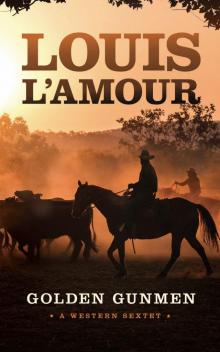 Golden Gunmen
Golden Gunmen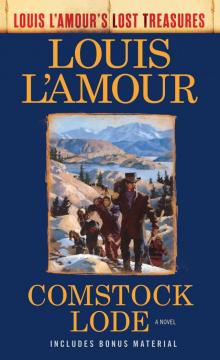 Comstock Lode
Comstock Lode The Lonesome Gods (Louis L'Amour's Lost Treasures)
The Lonesome Gods (Louis L'Amour's Lost Treasures) No Traveller Returns (Lost Treasures)
No Traveller Returns (Lost Treasures) Yondering: Stories
Yondering: Stories The Strong Land
The Strong Land Reilly's Luck (Louis L'Amour's Lost Treasures)
Reilly's Luck (Louis L'Amour's Lost Treasures) The Man Called Noon (Louis L'Amour's Lost Treasures)
The Man Called Noon (Louis L'Amour's Lost Treasures) Draw Straight
Draw Straight Last of the Breed (Louis L'Amour's Lost Treasures)
Last of the Breed (Louis L'Amour's Lost Treasures) Taggart (Louis L'Amour's Lost Treasures)
Taggart (Louis L'Amour's Lost Treasures) The Hopalong Cassidy Novels 4-Book Bundle
The Hopalong Cassidy Novels 4-Book Bundle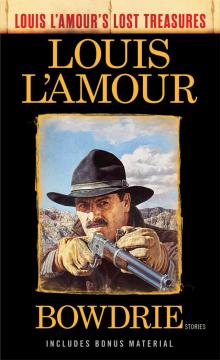 Bowdrie_Louis L'Amour's Lost Treasures
Bowdrie_Louis L'Amour's Lost Treasures Reilly's Luck
Reilly's Luck The Ferguson Rifle (Louis L'Amour's Lost Treasures)
The Ferguson Rifle (Louis L'Amour's Lost Treasures) Sacketts 00 - The Sackett Companion (v5.0)
Sacketts 00 - The Sackett Companion (v5.0) The Chick Bowdrie Short Stories Bundle
The Chick Bowdrie Short Stories Bundle Novel 1974 - The Californios (v5.0)
Novel 1974 - The Californios (v5.0)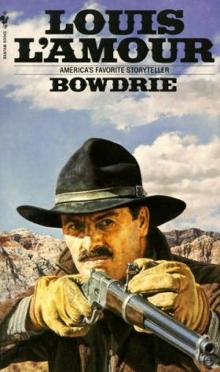 Collection 1983 - Bowdrie (v5.0)
Collection 1983 - Bowdrie (v5.0) Novel 1984 - The Walking Drum (v5.0)
Novel 1984 - The Walking Drum (v5.0) Over on the Dry Side
Over on the Dry Side The Walking Drum
The Walking Drum Novel 1963 - Catlow (v5.0)
Novel 1963 - Catlow (v5.0)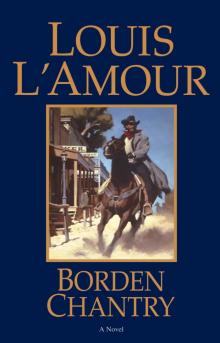 Borden Chantry
Borden Chantry Collection 1983 - Law Of The Desert Born (v5.0)
Collection 1983 - Law Of The Desert Born (v5.0) Ghost Towns
Ghost Towns Jubal Sackett (1985) s-4
Jubal Sackett (1985) s-4 Novel 1953 - Showdown At Yellow Butte
Novel 1953 - Showdown At Yellow Butte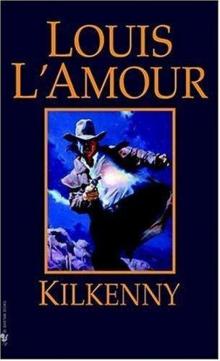 Kilkenny 03 - Kilkenny (v5.0)
Kilkenny 03 - Kilkenny (v5.0)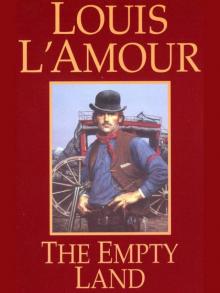 Novel 1969 - The Empty Land (v5.0)
Novel 1969 - The Empty Land (v5.0)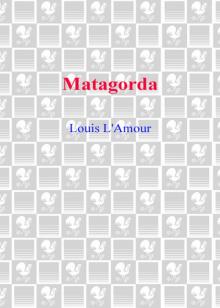 Matagorda
Matagorda The First Fast Draw
The First Fast Draw Novel 1950 - Westward The Tide (v5.0)
Novel 1950 - Westward The Tide (v5.0) Ride the Dark Trail s-18
Ride the Dark Trail s-18 Novel 1963 - Fallon (v5.0)
Novel 1963 - Fallon (v5.0) Novel 1964 - Kiowa Trail (v5.0)
Novel 1964 - Kiowa Trail (v5.0) Kilkenny
Kilkenny Riders of the Dawn
Riders of the Dawn Sackett (1961) s-9
Sackett (1961) s-9 Fallon
Fallon Ride the River (1983) s-5
Ride the River (1983) s-5 Mojave Crossing s-11
Mojave Crossing s-11 Novel 1958 - Radigan (v5.0)
Novel 1958 - Radigan (v5.0) The Collected Short Stories of Louis L'Amour, Volume Five
The Collected Short Stories of Louis L'Amour, Volume Five Novel 1953 - Showdown At Yellow Butte (v5.0)
Novel 1953 - Showdown At Yellow Butte (v5.0) Collection 1980 - Yondering
Collection 1980 - Yondering Novel 1957 - Last Stand At Papago Wells (v5.0)
Novel 1957 - Last Stand At Papago Wells (v5.0) North To The Rails
North To The Rails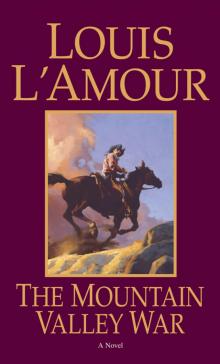 The Kilkenny Series Bundle
The Kilkenny Series Bundle Novel 1972 - Callaghen (v5.0)
Novel 1972 - Callaghen (v5.0) Novel 1970 - Reilly's Luck (v5.0)
Novel 1970 - Reilly's Luck (v5.0)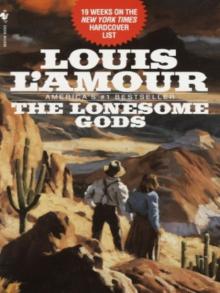 The Lonesome Gods
The Lonesome Gods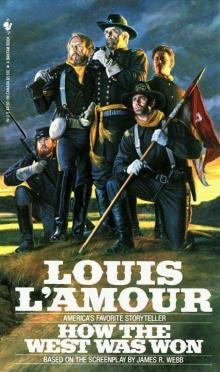 Novel 1963 - How The West Was Won (v5.0)
Novel 1963 - How The West Was Won (v5.0) Collection 2001 - May There Be A Road (v5.0)
Collection 2001 - May There Be A Road (v5.0) Flint
Flint Novel 1968 - Chancy (v5.0)
Novel 1968 - Chancy (v5.0) Volume 1: Unfinished Manuscripts, Mysterious Stories, and Lost Notes from One of the World's Most Popular Novelists
Volume 1: Unfinished Manuscripts, Mysterious Stories, and Lost Notes from One of the World's Most Popular Novelists Novel 1962 - High Lonesome (v5.0)
Novel 1962 - High Lonesome (v5.0) Fair Blows the Wind (Louis L'Amour's Lost Treasures)
Fair Blows the Wind (Louis L'Amour's Lost Treasures) Lando s-8
Lando s-8 The High Graders
The High Graders Collection 1986 - Night Over The Solomons (v5.0)
Collection 1986 - Night Over The Solomons (v5.0) The Collected Short Stories of Louis L'Amour, Volume 3
The Collected Short Stories of Louis L'Amour, Volume 3 Collection 1980 - Yondering (v5.0)
Collection 1980 - Yondering (v5.0) Showdown
Showdown The Quick And The Dead
The Quick And The Dead Novel 1968 - Down The Long Hills (v5.0)
Novel 1968 - Down The Long Hills (v5.0) The Lonely Men s-14
The Lonely Men s-14 Bowdrie (Louis L'Amour's Lost Treasures)
Bowdrie (Louis L'Amour's Lost Treasures) Treasure Mountain s-17
Treasure Mountain s-17 Novel 1959 - Taggart (V5.0)
Novel 1959 - Taggart (V5.0)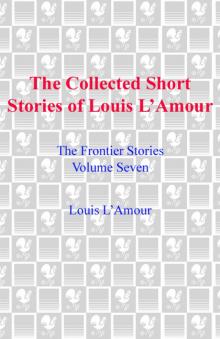 The Collected Short Stories of Louis L'Amour, Volume 7
The Collected Short Stories of Louis L'Amour, Volume 7 Novel 1957 - The Tall Stranger (v5.0)
Novel 1957 - The Tall Stranger (v5.0) Novel 1978 - The Proving Trail (v5.0)
Novel 1978 - The Proving Trail (v5.0) Callaghen (Louis L'Amour's Lost Treasures)
Callaghen (Louis L'Amour's Lost Treasures) Sitka
Sitka Collection 1988 - Lonigan (v5.0)
Collection 1988 - Lonigan (v5.0) The Californios
The Californios Novel 1966 - The Broken Gun (v5.0)
Novel 1966 - The Broken Gun (v5.0)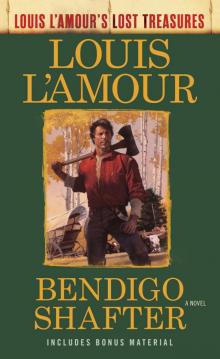 Bendigo Shafter (Louis L'Amour's Lost Treasures)
Bendigo Shafter (Louis L'Amour's Lost Treasures) Novel 1979 - The Iron Marshall (v5.0)
Novel 1979 - The Iron Marshall (v5.0)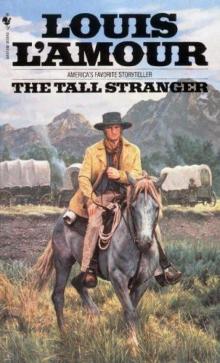 Novel 1957 - The Tall Stranger
Novel 1957 - The Tall Stranger Novel 1965 - The Key-Lock Man (v5.0)
Novel 1965 - The Key-Lock Man (v5.0) Collection 1986 - Dutchman's Flat (v5.0)
Collection 1986 - Dutchman's Flat (v5.0) Lonely On the Mountain s-19
Lonely On the Mountain s-19 Sackett's Land
Sackett's Land The Man Called Noon
The Man Called Noon Hondo (Louis L'Amour's Lost Treasures)
Hondo (Louis L'Amour's Lost Treasures) The Lawless West
The Lawless West The Warrior's Path (1980) s-3
The Warrior's Path (1980) s-3 Novel 1956 - Silver Canyon (v5.0)
Novel 1956 - Silver Canyon (v5.0) The Sky-Liners (1967) s-13
The Sky-Liners (1967) s-13 Mustang Man s-15
Mustang Man s-15 Novel 1971 - Tucker (v5.0)
Novel 1971 - Tucker (v5.0) Off the Mangrove Coast (Louis L'Amour's Lost Treasures)
Off the Mangrove Coast (Louis L'Amour's Lost Treasures) Collection 2005 - Riding For The Brand (v5.0)
Collection 2005 - Riding For The Brand (v5.0) Collection 1986 - The Trail To Crazy Man (v5.0)
Collection 1986 - The Trail To Crazy Man (v5.0) Silver Canyon
Silver Canyon The Man from Battle Flat
The Man from Battle Flat The Daybreakers (1960) s-6
The Daybreakers (1960) s-6 Kid Rodelo (Louis L'Amour's Lost Treasures)
Kid Rodelo (Louis L'Amour's Lost Treasures) Milo Talon
Milo Talon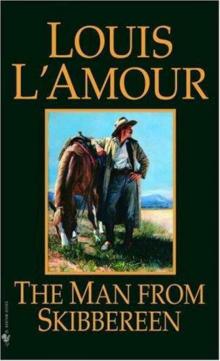 Novel 1973 - The Man From Skibbereen (v5.0)
Novel 1973 - The Man From Skibbereen (v5.0) Novel 1965 - The High Graders (v5.0)
Novel 1965 - The High Graders (v5.0) The Sacket Brand (1965) s-12
The Sacket Brand (1965) s-12 Rivers West
Rivers West Novel 1970 - The Man Called Noon (v5.0)
Novel 1970 - The Man Called Noon (v5.0) Education of a Wandering Man
Education of a Wandering Man The Collected Short Stories of Louis L'Amour, Volume 1
The Collected Short Stories of Louis L'Amour, Volume 1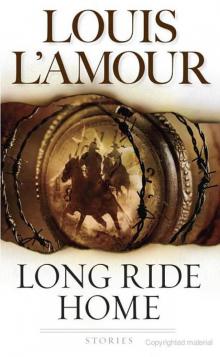 Collection 1989 - Long Ride Home (v5.0)
Collection 1989 - Long Ride Home (v5.0) Callaghen
Callaghen Collection 1999 - Beyond The Great Snow Mountains (v5.0)
Collection 1999 - Beyond The Great Snow Mountains (v5.0) West of the Tularosa
West of the Tularosa End Of the Drive (1997) s-7
End Of the Drive (1997) s-7 Novel 1986 - Last Of The Breed (v5.0)
Novel 1986 - Last Of The Breed (v5.0)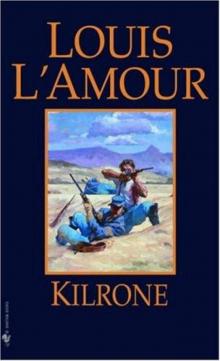 Novel 1966 - Kilrone (v5.0)
Novel 1966 - Kilrone (v5.0) Chancy
Chancy Desert Death-Song
Desert Death-Song Novel 1959 - The First Fast Draw (v5.0)
Novel 1959 - The First Fast Draw (v5.0) Kilkenny 02 - A Man Called Trent (v5.0)
Kilkenny 02 - A Man Called Trent (v5.0) Lost Trails
Lost Trails Novel 1972 - Callaghen
Novel 1972 - Callaghen Novel 1966 - Kid Rodelo (v5.0)
Novel 1966 - Kid Rodelo (v5.0) The Collected Short Stories of Louis L'Amour, Volume 2
The Collected Short Stories of Louis L'Amour, Volume 2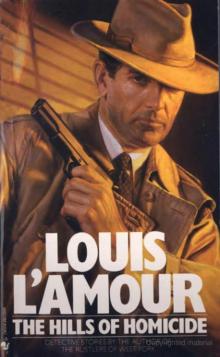 Collection 1983 - The Hills Of Homicide (v5.0)
Collection 1983 - The Hills Of Homicide (v5.0) Novel 1969 - Conagher (v5.0)
Novel 1969 - Conagher (v5.0) Radigan
Radigan High Lonesome
High Lonesome Bendigo Shafter
Bendigo Shafter Novel 1954 - Utah Blaine (As Jim Mayo) (v5.0)
Novel 1954 - Utah Blaine (As Jim Mayo) (v5.0) Collection 1990 - Grub Line Rider (v5.0)
Collection 1990 - Grub Line Rider (v5.0)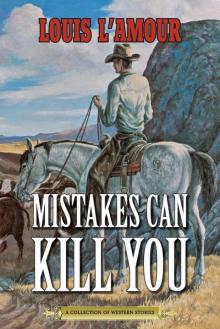 Mistakes Can Kill You
Mistakes Can Kill You The Iron Marshall
The Iron Marshall Novel 1963 - Dark Canyon (v5.0)
Novel 1963 - Dark Canyon (v5.0) Novel 1955 - Heller With A Gun (v5.0)
Novel 1955 - Heller With A Gun (v5.0) Novel 1978 - Bendigo Shafter (v5.0)
Novel 1978 - Bendigo Shafter (v5.0)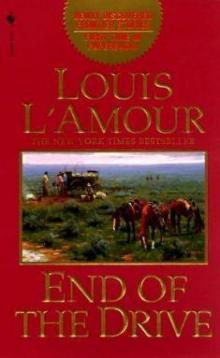 Collection 1997 - End Of The Drive (v5.0)
Collection 1997 - End Of The Drive (v5.0) Fair Blows the Wind
Fair Blows the Wind Talon & Chantry 07 - North To The Rails (v5.0)
Talon & Chantry 07 - North To The Rails (v5.0) The Trail to Crazy Man
The Trail to Crazy Man To the Far Blue Mountains (1976) s-2
To the Far Blue Mountains (1976) s-2 Collection 1981 - Buckskin Run (v5.0)
Collection 1981 - Buckskin Run (v5.0) Collection 2008 - Big Medicine (v5.0)
Collection 2008 - Big Medicine (v5.0) Collection 2003 - From The Listening Hills (v5.0)
Collection 2003 - From The Listening Hills (v5.0)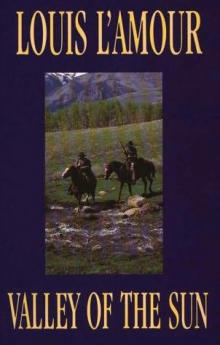 Collection 1995 - Valley Of The Sun (v5.0)
Collection 1995 - Valley Of The Sun (v5.0) Glory Riders
Glory Riders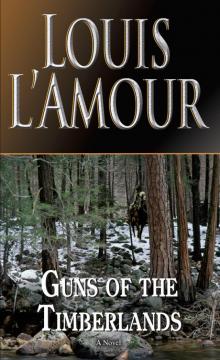 Guns of the Timberlands
Guns of the Timberlands The Collected Short Stories of Louis L'Amour, Volume Four
The Collected Short Stories of Louis L'Amour, Volume Four Novel 1968 - Brionne (v5.0)
Novel 1968 - Brionne (v5.0)